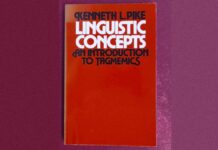Precis writing is a summarisation process in which a long text is condensed into a shorter version without losing its main ideas or concepts. The goal is to convey the gist or key message of the original text in a concise, clear, and coherent way, minimising details while maximising efficiency. A precis should always be written in your own words, and should not contain any of your commentary or interpretation.
Qualities of a Good Precis
- Accurate and precise
- Clear and coherent
- Well connected
- Original
- A suitable title
Owing to the repeatedly mentioned importance of keeping a precis short, writing a precis requires you to carefully understand the points that will provide the necessary highlights of the content. It might sound easy, but comprehending a text and keeping its theme intact requires strong skills and a lot of brainstorming.

Understand the Text
Read the text carefully to understand the theme, tone, and basic argument.
First Read
Read the text to get a general understanding without making any notes or marks.
Second Read
In this stage, read the text more carefully. Pay attention to the main ideas, the author’s argument and supporting details.
Identify the Tone and Style
Understand the author’s perspective and the tone of the piece. Is it casual? Formal? Sarcastic? Analytical? Understanding the tone helps you to understand the author’s intention and the main message.
Breakdown of the Text
Break the piece down into sections. This can be paragraphs or just thought chunks within the text.
Keywords and Phrases
Identify keywords and phrases in the text that capture the core ideas.
Summarize Each Section
After you identify the main points of each section, summarize them in your own words.
Identify Main Points
Highlight or underline the main points and supporting arguments.
Understand the Central Idea
The main point often includes the author’s thesis or the central idea they are trying to convey.
Note Essential Details
Look for details that support or explain the central idea. These may come as evidence, examples, and rational arguments presented by the author.
Watch for Signposts
These usually signal the author’s argument. Words like “therefore”, “because”, “in addition”, and “for example” can signify important bits of supporting information.
Re-read and Highlight
On a second or third reading, underline or highlight parts of the text that seem to be crucial for the author’s argument.
Reject the Unessential
Ignore details that are superfluous and are not tied directly to the main thesis and supporting arguments.
Write the Main Point
After gathering all the information, write out the main points. Remember to phrase these in your own words.
Write a Summary Sentence
Summarize the text’s main argument in one or two sentences. The summary sentence encapsulates the main points of the original text clearly and concisely.
Understand Text Thoroughly
Begin by reading and lucidly interpreting the piece, to grasp its major premises and assertions.
Identify Core Ideas
Identify the text’s key ideas, points, or arguments. This might include the objective or purpose of the text, actions taken, what was discussed and results achieved.
Use Your Own Words
Paraphrase the main ideas into a single, coherent sentence. Be mindful to not inject your personal perspective or analysis.
Keep it Compact
Strive for brevity but maintain completeness. It shouldn’t be more than two sentences.
Clear and Precise
Aim for clarity and precision, avoiding any vague or ambiguous phrases. Be straightforward and factual.
Condense the Information
Combine the main points to form an overall summary, keeping it a quarter the length of the original.
Main Theme
Identify the main theme and underline the most important points that support this theme.
Remove Redundancies
Discard any repetitive or unnecessary information from the text.
Not to Omit Essential Details
While condensing, make sure not to leave out any significant details that contribute to the overall understanding of the topic.
Avoid Personal Opinion
Do not include your thoughts or interpretations. A precis is a factual summary.
Review and Revise
Read your precis, revise it for clarity, coherence and conciseness, and ensure it accurately represents the original text.
Proofread
Start by looking for common grammar, punctuation, and spelling errors. Make sure that your sentence structure and word choices make sense.
Check Length
A precis should be roughly one-third the length of the original text. If it’s too long, review it for unnecessary details or redundant information and edit accordingly.
Ensure Accuracy
Compare your precis to the original text to ensure you haven’t misinterpreted any information.
Check Completeness
Make sure you’ve captured all vital points from the original text, including the author’s argument, evidence, and conclusions.
Maintain Objectivity
While you’ve written the precis in your own words, avoid inserting any personal opinions or interpretations.
Look for Clarity
Make sure your precis is clear, coherent, and readable. It should summarise the text in a way that anyone can understand.
Essential Rules for a Good Precis
- Keep the text terse and up to the point.
- Use shorter words. For example, use ‘because’ instead of ‘owing to’, use ‘although’ instead of ‘in spite of the fact that’, etc.
- Make sure your text is lucid to understand. Avoid using jargon and complex sentences.
- Retain the core of the text.
- Your text should be a miniature reflection of the original text and should state the correct facts and figures.
Precis develops our capacity to discriminate between the essential and the non-essential. It helps you to learn to choose your words carefully and concisely construct your sentences.
Precis Sample
Original Passage: Diet plays an important role in the prevention of many chronic diseases. Eating a balanced diet rich in fruits, vegetables, whole grains and lean protein can help reduce the risk of conditions such as heart disease, diabetes and certain cancers. On the other hand, a diet high in processed and unhealthy foods can increase the risk of these diseases. It is important to be aware of the types of food we eat and tries to include nutrient-dense options in our diet. (124 words)
Title: The Role of Diet in Preventing Disease
Precis: Eating a balanced diet rich in fruits, vegetables, whole grains and lean protein can help reduce the risk of chronic diseases, while a high-processed and unhealthy diet can increase the risk. It is important to be aware of the types of food we eat and include nutrient-dense options. (48 words)




























